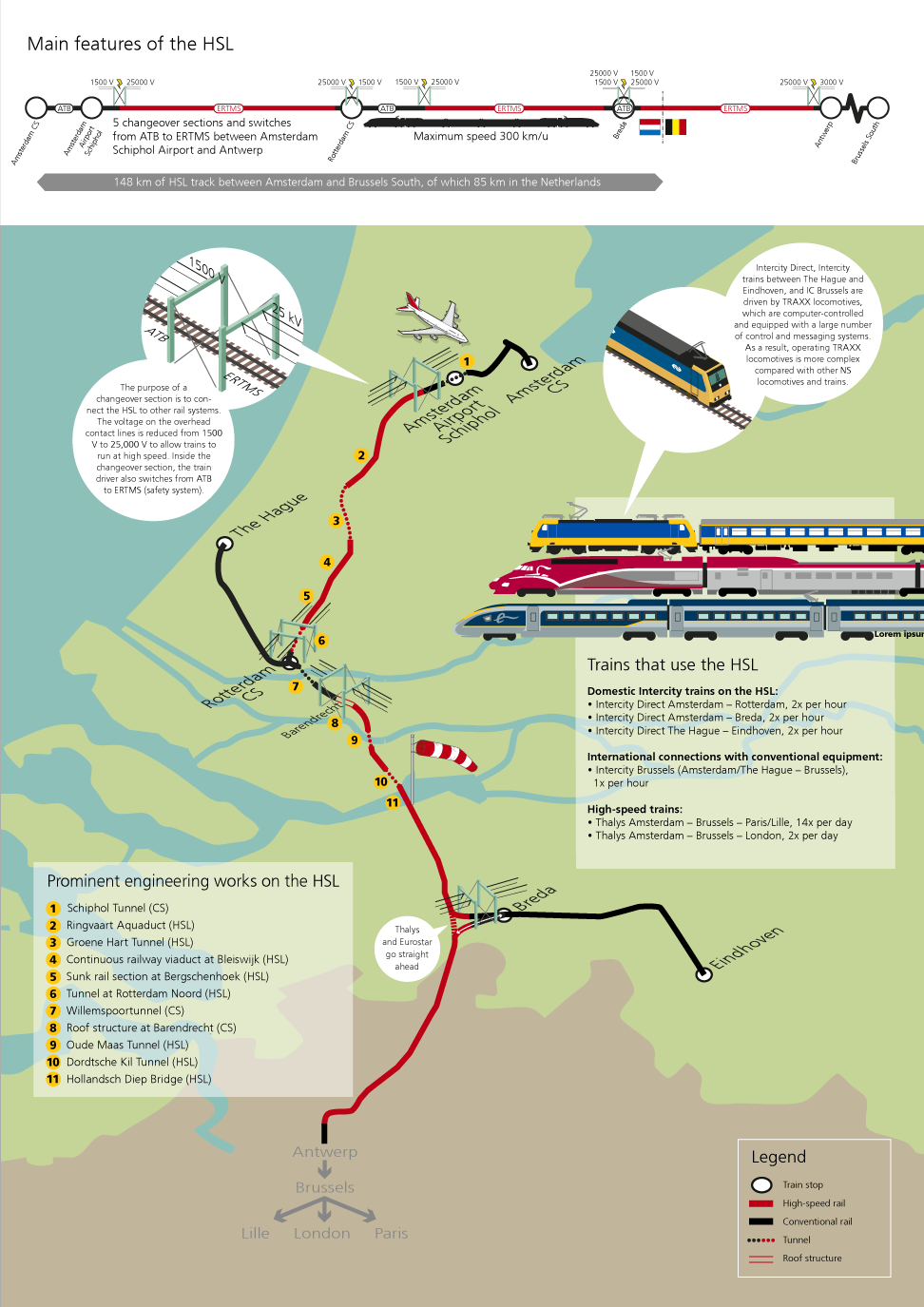Over the course of 2019, NS prepared for the government's midterm review of our performance during the first half of the franchise period (2015-2019). By making passengers our top priority we are encouraged to make train services more robust and to offer our passengers a seamless door-to-door journey. We report openly and transparently about our results.
Main rail network franchise 2015-2025
The State Secretary for Infrastructure and Water Management awarded the rail transport franchise to NS in December 2014. The franchise runs from 1 January 2015 for a term of ten years. Whereas the transport franchise focuses on the longer term, NS also draws up an annual transport plan for the coming year. In the transport plan, we link our aims and objectives to specific actions and performance indicators for the year ahead, ensuring that the goals will be achieved over the course of the franchise. The definitions of the KPIs and the descriptions of the measurement methods used can be found in the Transport Franchise Definitions.
Minimum and target values
Minimum value: value for the yearly minimum level of performance required for a performance indicator.
Target value: value for the level of performance required for a performance indicator in 2019 and 2024.
According to the main rail network franchise for 2015-2025, the midterm review is to cover the first half of the franchise period. The review will assess whether the way NS has carried out the franchise activities has resulted in the improvements required for the Long-Term Rail Agenda. The minimum and target values for the 2020-2024 period will also be determined during the midterm review.
Changed indicators
Every month, NS reports on its performance with regard to well-defined and established KPIs. The KPIs themselves are subject to an annual review to determine whether they should be amended. The annual KPI review for 2020 was conducted at the end of 2019. It did not result in any substantive changes to the KPIs that would affect their meaning or value.
Background of performance on HSL South
Train journeys per day on HSL South, as per 31 Dec of the year concerned
2019 | 2018 | 2017 | 2013 | |
Intercity direct | ||||
Amsterdam-Breda | 68 | 68 | 70 | |
Amsterdam-Rotterdam | 66 | 64 | 62 | |
Intercity The Hague-Eindhoven | 73 | 73 | 73 | |
Thalys | ||||
Amsterdam-Paris | 22 | 26 | 26 | 8 |
Amsterdam-Lille | 2 | 2 | 2 | |
Marne-la-Vallée | 4 | |||
Brussels | 5 | |||
Intercity Brussels | 32 | 32 | ||
Eurostar | 6 | 4 | ||
Total | 276 |
Performance in 2019
HSL South is popular. Passenger satisfaction is growing, thanks in part to improved punctuality and seat availability. Basically, the results of HSL South are good. NS and ProRail are making every possible effort to further improve their performance on behalf of the passengers on HSL South. Punctuality for passengers dropped for a while between late 2018 and early 2019, due in part to a software error in the TRAXX locomotives. That error was remedied in March 2019 and performance has strongly improved since then.
A wide variety of measures, including plan amendments, extra attention and training for staff and a new protocol for stranded trains, has enabled us to perform over and above the minimum score for the third consecutive year.
Complexity of HSL South
Even so, providing reliable services on HSL South remains a challenge, due in part to the complexity and location of the associated infrastructure. HSL South involves a unique combination of infrastructure, safety, rolling stock and timetable. There are three types of train that run frequent services on the HSL South tracks. HSL South comprises both newly constructed and conventional tracks, with multiple system transitions en route for the power supply and the safety system. A train travelling on HSL South from Amsterdam to Brussels passes six changeover sections, where the train changes over to a different voltage and a different safety system. On the same route, the train has to deal with four different safety systems and three different amperages. These specific features make HSL South very vulnerable to faults with potentially major consequences for passengers.
According to an independent study commissioned by NS and ProRail, a radical alteration to the infrastructure is needed in order to bring performance up to standard in the longer term and ensure structural improvements.
In the long-term vision for HSL South, NS and ProRail have developed a series of measures for improving the infrastructure on HSL South. Over time, those measures should raise performance levels to those achieved on the main rail network. One example of such a measure is the elimination of system errors in the tracks, such as the multiple changeover sections and safety systems.

Introduction of New Generation Intercity on HSL South
In 2021, New Generation Intercity (ICNG) trains will be introduced on HSL South to replace the TRAXX locomotives. Test rides will be performed on the main rail network in 2020. The trains concerned have already been tested in test facilities abroad.
Governance review
HSL governance will be reviewed upon the launch of the 2020 timetable. Following a successful trial period, we plan to launch an HSL Process Platform, among other things. We will use the Platform for frequent consultation with all the partners in the chain on the performance of HSL South and on specific rail products such as Thalys, Intercity Direct and Intercity Brussels.